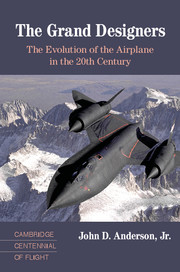Refine search
Actions for selected content:
12661 results in History of science
Contents
-
- Book:
- Robert Musil and the Question of Science
- Published by:
- Boydell & Brewer
- Published online:
- 26 April 2020
- Print publication:
- 15 April 2020, pp v-vi
-
- Chapter
- Export citation
Part I - Musil and the Two Cultures
-
- Book:
- Robert Musil and the Question of Science
- Published by:
- Boydell & Brewer
- Published online:
- 26 April 2020
- Print publication:
- 15 April 2020, pp 13-14
-
- Chapter
- Export citation
3 - Musil’s Theory of Vision
-
- Book:
- Robert Musil and the Question of Science
- Published by:
- Boydell & Brewer
- Published online:
- 26 April 2020
- Print publication:
- 15 April 2020, pp 51-62
-
- Chapter
- Export citation
Part II - Aesthetics and Ethics in the Context of the Two Cultures
-
- Book:
- Robert Musil and the Question of Science
- Published by:
- Boydell & Brewer
- Published online:
- 26 April 2020
- Print publication:
- 15 April 2020, pp 77-78
-
- Chapter
- Export citation
Frontmatter
-
- Book:
- Robert Musil and the Question of Science
- Published by:
- Boydell & Brewer
- Published online:
- 26 April 2020
- Print publication:
- 15 April 2020, pp i-iv
-
- Chapter
- Export citation
5 - Modernity’s Crisis
-
- Book:
- Robert Musil and the Question of Science
- Published by:
- Boydell & Brewer
- Published online:
- 26 April 2020
- Print publication:
- 15 April 2020, pp 79-91
-
- Chapter
- Export citation
9 - Musil’s Correspondence Project: The Man Without Qualities and The Blackbird
-
- Book:
- Robert Musil and the Question of Science
- Published by:
- Boydell & Brewer
- Published online:
- 26 April 2020
- Print publication:
- 15 April 2020, pp 135-148
-
- Chapter
- Export citation
4 - The Essays
-
- Book:
- Robert Musil and the Question of Science
- Published by:
- Boydell & Brewer
- Published online:
- 26 April 2020
- Print publication:
- 15 April 2020, pp 63-76
-
- Chapter
- Export citation

The Grand Designers
- The Evolution of the Airplane in the 20th Century
-
- Published online:
- 27 April 2018
- Print publication:
- 22 March 2018
Copyright page
-
- Book:
- The Grand Designers
- Published online:
- 27 April 2018
- Print publication:
- 22 March 2018, pp vi-vi
-
- Chapter
- Export citation
Appendices
-
- Book:
- The Grand Designers
- Published online:
- 27 April 2018
- Print publication:
- 22 March 2018, pp 289-296
-
- Chapter
- Export citation
3 - Setting the Gold Standard
-
- Book:
- The Grand Designers
- Published online:
- 27 April 2018
- Print publication:
- 22 March 2018, pp 44-67
-
- Chapter
- Export citation
Index
-
- Book:
- The Grand Designers
- Published online:
- 27 April 2018
- Print publication:
- 22 March 2018, pp 297-306
-
- Chapter
- Export citation
7 - Defying the Limits
-
- Book:
- The Grand Designers
- Published online:
- 27 April 2018
- Print publication:
- 22 March 2018, pp 187-281
-
- Chapter
- Export citation
Appendix B - Thrust Available
-
- Book:
- The Grand Designers
- Published online:
- 27 April 2018
- Print publication:
- 22 March 2018, pp 293-296
-
- Chapter
- Export citation
Appendix A - Calculation of Change in Maximum Velocity of the Spitfire
-
- Book:
- The Grand Designers
- Published online:
- 27 April 2018
- Print publication:
- 22 March 2018, pp 289-292
-
- Chapter
- Export citation
Contents
-
- Book:
- The Grand Designers
- Published online:
- 27 April 2018
- Print publication:
- 22 March 2018, pp vii-viii
-
- Chapter
- Export citation
8 - Airplane Design and the Grand Designers
-
- Book:
- The Grand Designers
- Published online:
- 27 April 2018
- Print publication:
- 22 March 2018, pp 282-288
-
- Chapter
- Export citation
6 - Design Perfection
-
- Book:
- The Grand Designers
- Published online:
- 27 April 2018
- Print publication:
- 22 March 2018, pp 156-186
-
- Chapter
- Export citation
Preface
-
- Book:
- The Grand Designers
- Published online:
- 27 April 2018
- Print publication:
- 22 March 2018, pp ix-x
-
- Chapter
- Export citation
